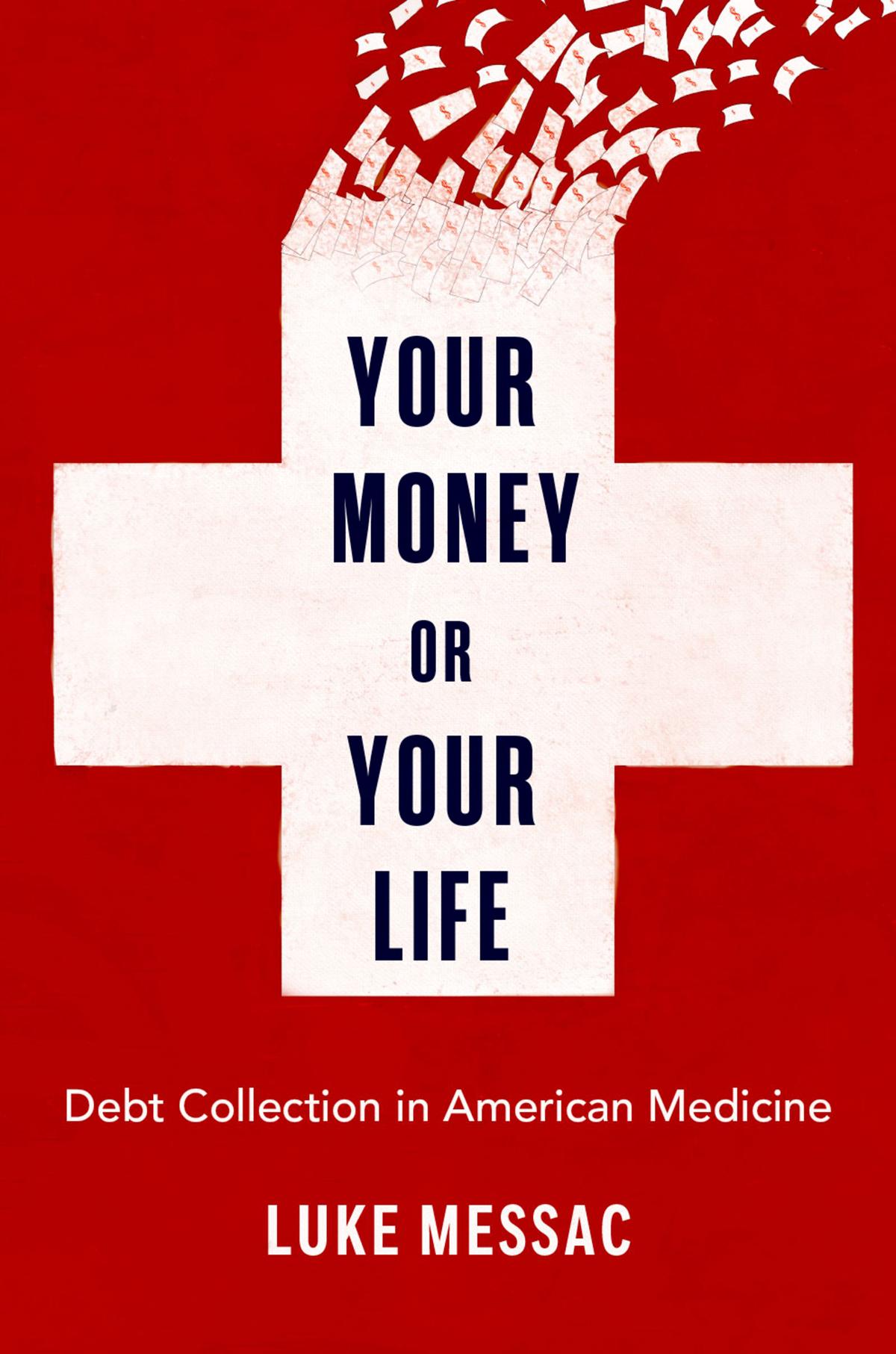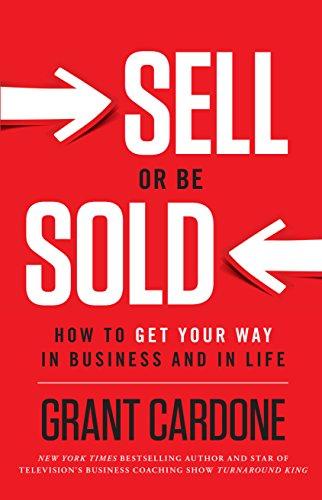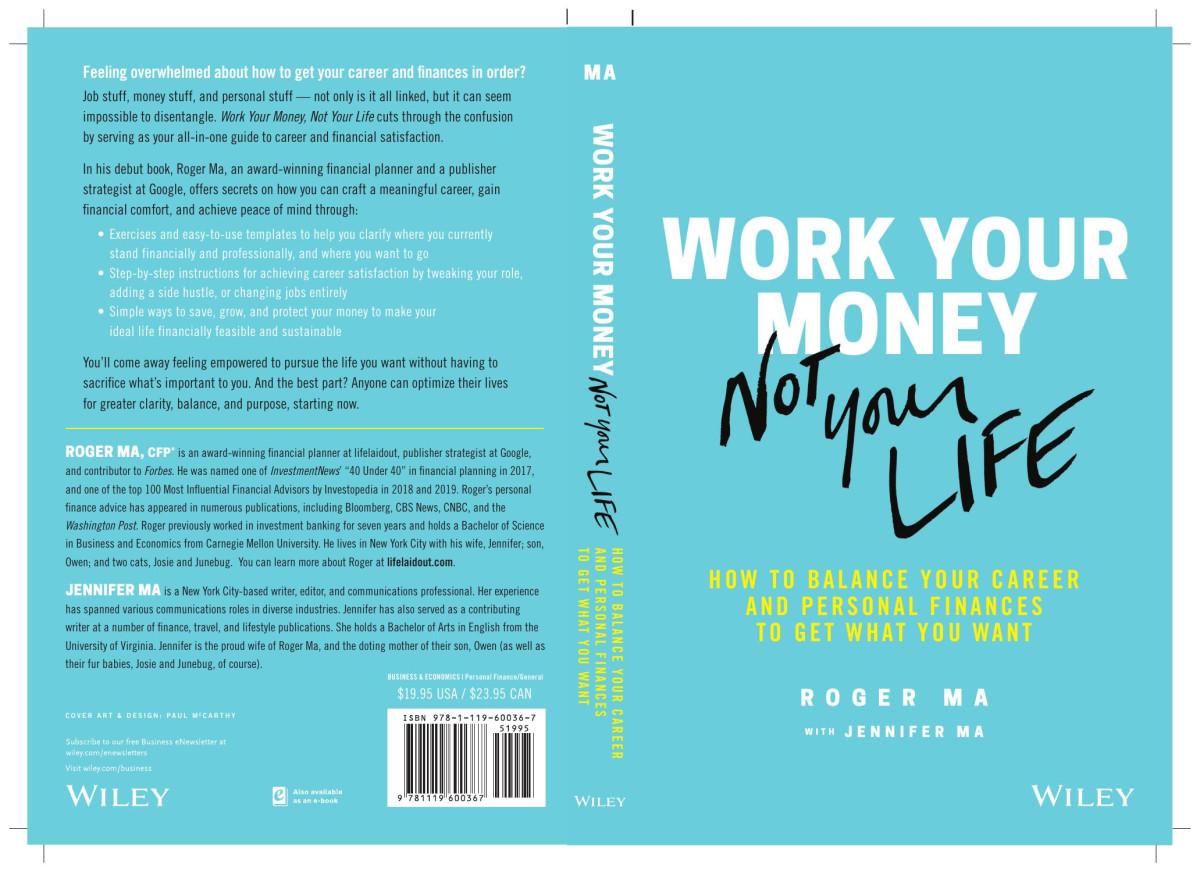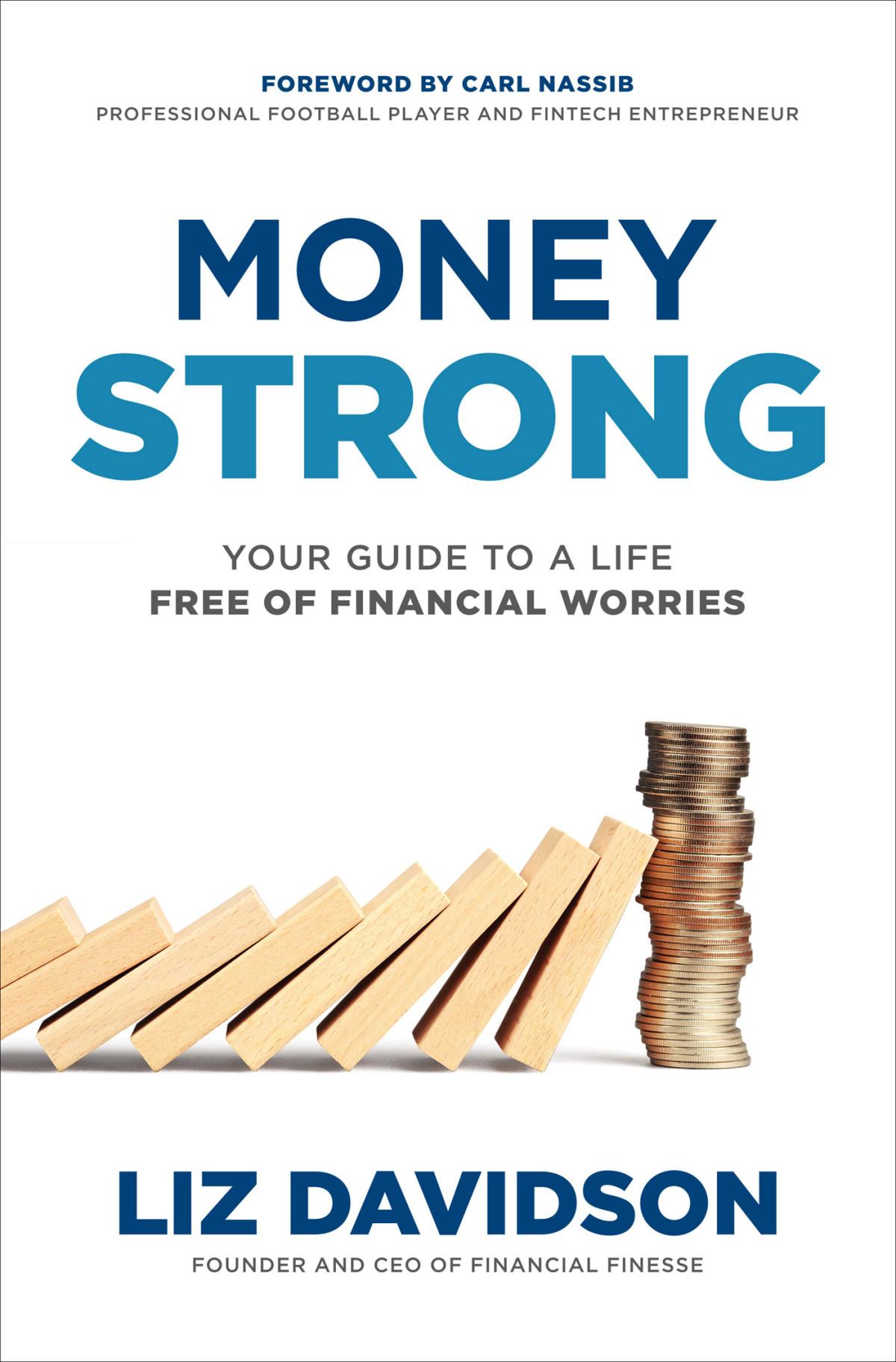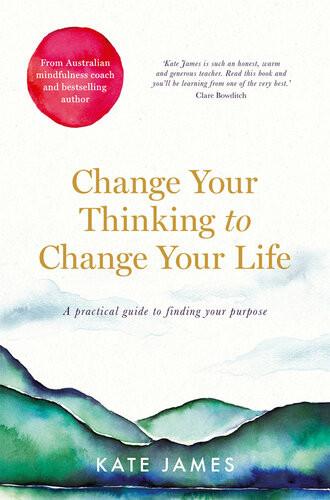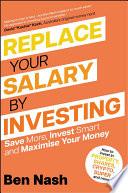PRAISE FOR YOURMONEYORYOURLIFE
“The German word for debt is the same word for guilt. But you don’t have to be German to be a guilty debtor in the United States, where the sin of being ill and poor is discharged by indentured labor and the harassment of the debt collector. Luke Messac takes us on a tour of the underbelly of America’s hospitals and their horrific debt practices. If there’s one country where you don’t want to be both poor and ill, it’s the United States.”
—Mark Blyth, The William R. Rhodes ’57 Professor of International Economics,
The Watson Institute for International and Public Affairs, Brown University
“A crystal-clear critique of the travesty of profit-driven US medicine by a historian drawing on archives, oral history, public records, and his own ethnographic experience as a doctor delivering emergency care medicine for a typically predatory ‘non-profit hospital’ that bankrupts its poorest, most vulnerable patients. All medical students should read this book to prevent themselves from inadvertently becoming cogs in a monstrous wheel that indebts their lowest income patients.”
Philippe Bourgois, Author, In SearchofRespect: Selling Crackin ElBarrio and Co-Author, Righteous Dopefiend
“In the wake of the COVID-19 pandemic, the impetus for transforming the American health care system is more urgent than ever. Doctor and historian Luke Messac shows how the system has been warped by growing financialization and profiteering, with disastrous consequences for the millions of people struggling with medical debt. Both infuriating and illuminating, he paints a portrait too compelling to ignore.”
Dave A. Chokshi, 43rd Health Commissioner of New York City
“Your Money or Your Life offers a rare, deeply powerful, and impressively original look at the roots of medical greed and how and why health care debt is driving down the health of our nation. This book is a passionate and inspiring expression of the importance of empowering community leaders and residents to advocate for affordable, accessible, and equitable health care before it’s too late. It provides the roadmap, now it’s up to all of us to heed the charge.”
—Daniel E. Dawes, Author, The PoliticalDeterminants ofHealth
“Usually, doctors keep themselves aloof from their patients’ financial troubles, but not Luke Messac. Your Money or Your Life shows how medical debt and the fear of
debt decimate family finances and prevent sick people from seeking needed care. Dr. Messac, a historian and emergency physician, is one of our most important critics of the US health system. His voice is engaging and compassionate, and we must listen.”
Beatrix Hoffman, Professor of History, Northern Illinois University and Author, The Wages ofSickness andHealthCare for Some
“In Your Money or Your Life, Luke Messac weaves together the compelling, and true, story of how medical debt collection became so aggressive and its real-world impact. Taking readers on a remarkable—and eminently readable—journey through the history and practice of medical debt collection, Luke Messac offers the definitive documentation of how deeply embedded medical debt collection practices are to health care finance in America. You will learn about senior citizens doing hard labor to pay off hospital bills, patients getting jailed for missing a court date about their late medical bills, and hospitals foreclosing on homes when former patients fall behind on medical bill payment. Ultimately, this great book demonstrates how these events are not aberrations or one-off errors in judgment, but baked into the design of American health care and the institutions that profit from the sidelines. Dr. Messac’s book proves that it will take more than occasional finger wagging or modest reforms around the edges to ensure that patients and doctors are no longer debtors and creditors. Everyone, and I do mean everyone, should read Your Money or Your Life.”
—Melissa B. Jacoby, Graham Kenan Professor of Law, University of North Carolina at Chapel Hill
“In Your Money or Your Life, Dr. Messac provides a piercing and must-read investigation into how medical debt came to be such a powerful and grim force in American medicine. To create change for the millions of American families beset by the financial toxicity of our health care system, we must learn from this difficult history.”
Victor Roy, Physician, Sociologist, and Author, Capitalizing a Cure: How Finance Controls the Price andValue ofMedicines
Y
OUR MONEY OR YOUR LIFE
DebtCollection in American Medicine
Luke Messac
Oxford University Press is a department of the University of Oxford. It furthers the University’s objective of excellence in research, scholarship, and education by publishing worldwide. Oxford is a registered trade mark of Oxford University Press in the UK and certain other countries.
Published in the United States of America by Oxford University Press 198 Madison Avenue, New York, NY 10016, United States of America.
© Oxford University Press 2024
All rights reserved. No part of this publication may be reproduced, stored in a retrieval system, or transmitted, in any form or by any means, without the prior permission in writing of Oxford University Press, or as expressly permitted by law, by license, or under terms agreed with the appropriate reproduction rights organization. Inquiries concerning reproduction outside the scope of the above should be sent to the Rights Department, Oxford University Press, at the address above.
You must not circulate this work in any other form and you must impose this same condition on any acquirer.
Library of Congress Cataloging-in-Publication Data
Names: Messac, Luke, author.
Title: Your money or your life : debt collection in American medicine / Luke Messac.
Description: New York : Oxford University Press, [2024] | Includes bibliographical references and index.
Identifiers: LCCN 2023017233 (print) | LCCN 2023017234 (ebook) | ISBN 9780197676639 (hardback) | ISBN 9780197676653 (epub) | ISBN 9780197676660
Subjects: MESH: Patient Credit and Collection | Accounts Payable and Receivable | United States
Classification: LCC RA410.53 (print) | LCC RA410.53 (ebook) | NLM W 80 | DDC 338.4/73621—dc23/eng/20230721
LC record available at https://lccn.loc.gov/2023017233
LC ebook record available at https://lccn.loc.gov/2023017234
DOI: 10.1093/oso/9780197676639.001.0001
This material is not intended to be, and should not be considered, a substitute for medical or other professional advice. Treatment for the conditions described in this material is highly dependent on the individual circumstances. And, while this material is designed to offer accurate information with respect to the subject
matter covered and to be current as of the time it was written, research and knowledge about medical and health issues is constantly evolving and dose schedules for medications are being revised continually, with new side effects recognized and accounted for regularly. Readers must therefore always check the product information and clinical procedures with the most up-to-date published product information and data sheets provided by the manufacturers and the most recent codes of conduct and safety regulation. The publisher and the authors make no representations or warranties to readers, express or implied, as to the accuracy or completeness of this material. Without limiting the foregoing, the publisher and the authors make no representations or warranties as to the accuracy or efficacy of the drug dosages mentioned in the material. The authors and the publisher do not accept, and expressly disclaim, any responsibility for any liability, loss, or risk that may be claimed or incurred as a consequence of the use and/or application of any of the contents of this material.
To my parents, who inspired me to work to build the future, and to my daughter, Madeleine, who gives me a reason to keep trying.
Acknowledgments
Introduction
PART I: The Backstory: Collecting Medical Debt in Nineteenth- and Twentieth-Century America
Before the Debt Machine
No Mercy: Debt in the Late Twentieth Century
PART II: The Players: Collectors, Hospitals, Politicians, and Patients
Trading in Misery
Out of the Shadows: Medical Debt Collection in the Press and in Political Debate
PART III: The Recent Past and the Road Ahead
An Incomplete Answer
Reformers, Abolitionists, and the Costs of Inaction
Conclusion
Afterword:MyDayinCourt
Notes
Bibliography
Index
ACKNOWLEDGMENTS
I began this book out of a sense of betrayal. Medicine, I thought, is not what it should be, what it can be. I wanted to know why. But in researching and writing this history, I benefited from the loyalty, friendship, and guidance of so many.
As always, librarians proved ever-ready sources of information and hidden treasures, leading me through paywalls and mining old records. Sue Warthman at Brigham and Women’s Hospital and the librarians at Rockefeller Library at Brown University were patient, knowledgeable, and resourceful.
My editor, Sarah Humphreville, helped me think through my ideas for the book and hone the tone, style, and argument. She has always been an advocate for my work within the Press. Her editorial colleague, Emma Hodgdon, also provided incisive comments on the manuscript.
Mary Lederer helped with copy editing, citations, and indexing, and was always ready with words of encouragement. I am so grateful for the people who took time to read the book proposal and early drafts, including Mark Blyth, Shay Strauss, Jason Chernesky, Imani Fonfield, and Paula McNulty (who also merits far more thanks for being my mom). Courtney Petrouski and Mat Budelman are amazing friends and offered some great design ideas, one of which was the basis for the cover. Jason Silverstein and the team at Peste allowed me to publish part of Chapter 3 in their (absolutely essential) online publication in 2022. I also benefited from conversations and questions at presentations I gave at conferences and on grand rounds, at the University of Nevada Las Vegas Department of Emergency Medicine, the Brown University Department of Emergency Medicine, and the 2022 National
Conference for Physician-Scholars in the Social Sciences and Humanities at UCLA.
When I questioned my own hospital’s use of lawsuits to collect debts from poor patients, I was not a favorite among C-suite executives, but I had the steadfast support and guidance of my fellow residents, mentors, and program directors, who I am pretty sure do not want to be mentioned by name. But I hope they know how deeply indebted I am to them.
I never would have been able to start down the path of the history of medicine without the patient mentorship of Robert Aronowitz and Steven Feierman. I am also a grateful student of many expert teachers, including Deborah Boucoyannis, Thomas Ponniah, David Barnes, Philippe Bourgois, and Projit Mukharji. My old and new homes, the Rhode Island Hospital and Brigham and Women’s Hospital Departments of Emergency Medicine, have been great places to research and write about the past, present, and future of medicine. The doctors, nurses, techs, and staff there taught me how to care for patients with as much skill and compassion as our broken system allows.
My wife, Jamie, the most caring and conscientious doctor I know, shared her thoughts on the horrors of medical debt even as she worked to care for patients amidst the horrors of a pandemic. Her family is filled with medical professionals; her mother, Cathy, was a nurse, and her father, James, a doctor. Both of her sisters, Melanie and Samantha, are physicians. Melanie’s daughters, Nina and Josie, are more than comfortable with the medical-speak at dinners. The Greenman family’s commitment to their family, friends, and patients has long been an example for me. My parents, Paula and Achille, my grandparents, and my brothers, Owen and Patrick, taught me not to sit still when you see wrong. They showed, through their examples, how to make your vocations and avocations bring forth love and justice in the world. My daughter, Madeleine, fills me with hope for the future. And Paul Farmer, my late mentor and so much of my inspiration to become a doctor, taught me to fear no one, to make a preferential option for the poor, and to always work alongside friends.
Introduction
The usual forms having been gone through, the body of Samuel Pickwick was soon afterwards confided to the custody of the tipstaff, to be by him taken to the warden of the Fleet Prison, and there detained until the amount of the damages and costs in the action of Bardell against Pickwick was fully paid and satisfied. “And that,” said Mr. Pickwick, laughing, “will be a very long time.”
—Charles Dickens,
The PickwickPapers
The ultimate, hidden truth of the world is that it is something that we make, and could just as easily make differently.
—David Graeber, The Utopia ofRules
In the laundry of the Danville Regional Medical Center in southern Virginia in 1995, Ms. Wilson folded hospital gowns. Five days a week, it was her task to turn the piles of dirty laundry, towels, gowns, and scrubs into neat, clean stacks. At age 68, she was older than most people who performed such relentless physical labor. She had not planned to have such a job at her age. And, to be honest, it was not a job, not really, for at the end of each week, the hospital did not send her a paycheck.
Grieving the recent death of her husband after a prolonged hospitalization, Ms. Wilson faced medical debt she could never hope to repay on her fixed income. Danville gave her the option of entering its “Service-Credit Program,” in which patients owing between $300 and $20,000 were put to work typing, filing, housekeeping, landscaping, and printing. For their labor, they earned $5 per hour toward settling their debts. “Net pay is applied directly to the bill, so no cash changes hands,” explained an upbeat frontpage article in the RichmondTimes-Dispatch.1 Nowhere in the article was the possibility mentioned that the medical center, a nonprofit,
could simply write off the unpaid debts of low-income patients as charity-care. Later in the article, the Service-Credit Program was lauded as a “working cure,” without a hint of irony.
Perhaps most striking was the fact that the hospital leadership was proud of this program. It was, after all, a rather dystopian scheme that would recoup, through the manual labor of a poor widow, the costs incurred during the medical care of her late husband. It helped low-income patients “who want to retain their dignity and protect their credit rating and do the right thing about eliminating a bill,” said one hospital executive. He bragged that they had fielded inquiries from 40 hospitals about starting similar initiatives. Dr. Thomas Massaro, a pediatrician and health policy scholar at the University of Virginia, called the Service-Credit Program “ingenious” for the “mindset it establishes in the patient population, that there are ways of exercising responsibility and control over your destiny.”2
How could such a program come to be seen as a benefit to patients? In what kind of society would this modern-day indentured servitude win laudatory publicity from the regional newspaper and plaudits from health policy experts? To really see how this is possible, you have to understand what alternatives indebted patients faced, what repercussions they could expect if they did not take hospitals such as Danville up on their offers of unpaid labor. Facing an impending future of ruined credit, harassing phone calls, and legal trouble, Ms. Wilson decided that working in the hospital laundry, inhumane and unremunerated as it was, was the best among her very bad options.
There has always been inhumanity in American medical care. Society’s marginalized have long dealt with varied forms of neglect and exploitation. But beginning in the 1980s, a rise in unpaid medical bills occurred alongside a transformation in how hospitals, including nonprofit hospitals, try to collect those debts. This book tells the story of how the collection of medical debt in the United States came to be so aggressive, and of the impact this is having on Americans’ lives. For centuries, doctors were often unable to collect
—or declined to pursue—unpaid bills. But during the past four decades, such debts in America have shifted from obligations negotiated by doctors and patients and hospitals into assets bought and sold by people with no role at all in patient care. Spurred in part by insurance companies’ turn toward higher co-payments and deductibles, hospitals faced more severely delinquent payments. Hospital administrators turned away from charity-care and gave in to the siren call of collection companies, including debt buyers and collection attorneys.
Whereas for most of the twentieth century much of the work of collecting delinquent payments was done by hospitals’ own in-house collection departments, by the early twenty-first century many hospitals had come to rely on outside agencies and debt buyers. Here is how the system works: Hospitals “assign” their debts to a collection agency; the agency works the debt and keeps a portion of what they successfully recoup. Sometimes hospitals sell their debt, in which case they receive an up-front payment and the buyer keeps all of the money collected thereafter. How common are these arrangements? As early as 2013, hospitals and health care providers were the largest group of customers for collection agencies and agencies’ largest source of recoveries in dollar terms.3 By 2018, a survey of 100 hospital executives found that 54 percent used a thirdparty vendor for at least a portion of their debt collection.4 In 2020 alone, medical debt collection brought in $1.5 billion in revenue for America’s 7,000 debt collection agencies.5
Hospitals and debt collectors have a variety of tactics to get patients to pay up. The simplest and oldest methods involved chastising letters, home visits, and phone calls. If this was not enough, they reported the delinquent debt to credit bureaus. But when this proved ineffective, as it often did for debts that the patient simply could not pay, collectors turned to increasingly aggressive tactics. They filed lawsuits against patients and then sought to enforce payment. They did this by claiming a portion of patients’ paychecks (wage garnishment), by emptying their bank accounts (bank executions), or even by kicking them out of their homes
(property foreclosure). If patients did not appear in court, collectors sometimes asked judges to arrest the patients and put them in jail (body attachment). These actions, in addition to selling debt, reporting to credit bureaus, and refusing to provide care until debts are paid, are known as “extraordinary collection actions,” and they have become all too ordinary. Between 2018 and 2020, 26 of the 100 largest hospitals in the United States filed lawsuits to collect bills owed by their patients.6 Among a representative sample of hospitals surveyed in 2021 and 2022, more than two-thirds had policies that included taking legal actions such as lawsuits, wage garnishment, and property liens against patients in debt.7
The debt collection industry is one of the many intermediaries in health care, alongside private equity, insurance companies, and pharmacy benefit managers, that profit off sickness while doing little to treat it. Bringing debt collectors into the billing relationship between doctors and patients was not a benign exercise. Divorced from any clinical or social bonds to patients, collectors of debt used draconian tactics. These became the norm, and hospitals, too, abandoned lenience. Hospitals and their collectors reported patients to credit bureaus, harming their chances for home mortgages and jobs. They sued patients, adding legal woes to physical illness. After winning these cases, as they almost always did, hospitals and their agents garnished patients’ wages, seized their bank accounts, and even foreclosed on their homes. In extreme cases, police showed up at the homes of patients who did not appear in court for these cases in order to bring them to jail. Hospitals used the might of the state to discipline the patient in debt. Those unfortunate enough to face destitution and illness at the same time were, in effect, treated like criminals.
Even when hospitals had charity-care programs in place, many qualifying patients were pursued for these debts, often because they had not been informed about financial assistance or did not have the wherewithal to complete the application. This unmerciful attitude to debtor patients conflicted with the reigning vision of nonprofit hospitals as pillars of community service and charity. In a rational
response to the cascade of misery that could follow unpaid bills, lowincome patients delayed necessary care. Their wounds festered; their cancers metastasized.
Press coverage of debt collection tactics proved a public relations debacle for hospitals. In the mid-2000s and again in the late 2010s, the burden of debt on patients became the focus of investigative journalists at local and national publications. In these moments, legislators and regulators at the state and federal levels launched investigations and proposed new laws. In response, administrators began to publicize other, more “dignified” means of debt repayment, such as making widows work in the laundry room. The modern hospital emerged from the medieval almshouse, but today it can resemble another relic—the debtor prison.
Various state and federal regulations and laws have tinkered at the edges of this problem: forbidding collectors from verbally abusing patients over the phone, requiring hospitals to have written charitycare policies, and, more recently, limiting reporting of medical debt to credit bureaus. But consumer protections in the legal code aim mostly to encourage collectors to maintain a certain decorum over the phone. Here is an example: The Fair Debt Collection Practices Act of 1977, the major legislative protection for consumers, allows debt collectors to threaten to take a patient to court, but only if the threat is real. The real roots of the problem, the onerous debts and the aggressive tactics to collect, have continued.
I am an emergency doctor and a historian. I have seen the impact of debt collection on my patients; in fact, I feared losing my job when I spoke up about lawsuits against patients filed by my own hospital’s collection agency. I wrote this book to explain something I am witnessing firsthand—in the United States, debt and debt collection are changing the most important relationships in medicine, driving a wedge between doctors and patients by destroying patients’ trust that medical professionals are looking out for their best interests. Worse, debt collection ruins patients’ financial lives, and the fear of this ruination keeps many from seeking care when they need it.
This is a story that has been told in pieces. It appears in outrageous stories in major newspapers, in stump speeches by Bernie Sanders and Elizabeth Warren, in congressional hearings, and in television segments on John Oliver’s LastWeekTonight. The New York Times, ProPublica, Kaiser Health News, NPR, the Washington Post, and the Wall Street Journal, and many other media organizations have written about hospitals that sue patients, seek to shirk charity-care obligations, and charge outrageously high bills to low-income patients. Videos about medical debt and how to deal with collectors have been seen by millions of people on social media platforms such as TikTok and YouTube. Medical debt has recently gained sustained attention in medical and public health journals, with studies of the extent of debt and of the collection tactics taken by hospitals. Organized efforts have been launched to forgive debts through charitable efforts such as RIP Medical Debt or to challenge the very legitimacy of medical debt through groups such as the Debt Collective, an outgrowth of the Occupy Wall Street movement.
But the story of medical debt and its collection has yet to be told all at once, in a way that explains how medical debt became so gargantuan, and how an industry developed to collect it. This history encompasses law, finance, and medicine. It is a tale of swashbuckling entrepreneurship, of ruthless empire-building, of infuriating bureaucracy, and of dogged protest. But most surprising of all, it is a story about blindness. Even as the amount of medical debt came to reach hundreds of billions of dollars, and as local hospitals sued patients by the thousands, most doctors and even administrators knew little about what their patients were facing.
In the meantime, medical debt has become a behemoth. Tallies vary, depending on whether you count medical debt placed on credit cards, or borrowed from friends, or in payment plans, or all bills past due, or just those delinquent debts that are reported to credit bureaus, but a 2022 survey estimated that 100 million Americans carry medical debt in some form.8 A 2021 study with a more restricted definition, including only medical debt in collections that appeared on Americans’ credit reports, totaled $140 billion. This
study found that 17.8 percent of Americans had medical debt in collections. The average person owed $429 of medical debt, more than every other source of debt combined ($390).9 Other experts on medical debt, including Senator Elizabeth Warren, have encouraged an even more expansive definition, arguing that lost income due to illness and caregiving responsibilities places even greater burdens on American families than direct charges from health care.10
Debt is a scary subject, one so many of us live with but try not to think too much about. It fills us with a deep sense of dread, of foreboding, of the sense that our lives and our freedom are being sapped. We have been led to think of it as something that we, as individuals, bring upon ourselves. Our inability to repay debts fills us with guilt; that guilt is a potent force for collectors, who insist that their work confers dignity on delinquent debtors. But when people are brought to court or lose their homes over hospital bills, how much dignity can they really have? As the anthropologist David Graeber observed in a magisterial global history of debt,
If history shows anything, it is that there’s no better way to justify relations founded on violence, to make such relations seem moral, than by reframing them in the language of debt above all, because it immediately makes it seem that it’s the victim who’s doing something wrong.11
While personal irresponsibility is nowhere near a sufficient explanation for the rising burden of consumer debt, it explains next to nothing when it comes to medical debt. These debts are almost entirely outside of an individual’s control and fall most heavily on the most vulnerable. Medical debt and aggressive collection are widespread, but they are not a universal experience. Like other hardships in American life, their frequency rises as one moves further down the steep gradient of historically determined inequality. In March 2022, the Consumer Financial Protection Bureau (CFPB) reported that 43 million Americans had medical debt on their credit reports. These debts were particularly prevalent among Black (28 percent) and Hispanic (22 percent) Americans, whereas White (17 percent) Americans experienced such debt less frequently.12 Other
studies have found additional factors that render people more likely to be in medical debt, including living with a disability,13 living in a low-income zip code,14 living in a state that did not expand Medicaid after the passage of the Affordable Care Act,15 and being a woman.16 Many of these disparities are long-standing; studies in the 1980s and 1990s found that pregnancy and childbirth were the most common diagnoses for patients who ended up with unpaid bills.17 Regional variations in medical debt are massive, with much higher burdens in the South. Among the 20 most populous counties in the United States, the percentage of people reporting medical debt ranged from a low of 3 percent of respondents in New York County, home of Manhattan, to a high of 27.3 percent in Tarrant County, Texas, home of Fort Worth.18
This book has surprisingly few bona fide individual villains. There are some very wealthy debt collectors whose actions do seem to fit into any reasonable definition of greed, but they are relatively small in number. The rank-and-file debt collectors who make the phone calls that so many of us dread are generally working-class Americans who struggle with their own debts. There are hospital administrators who do seem strangely enthusiastic about using exploitative tactics to collect from vulnerable patients, but most sincerely believe they are trying to be fiscally responsible when they hound patients to pay unaffordable debts.
But let us agree, from the start, that they are misguided. First, not all hospitals are in financial trouble. In 2019, America’s hospitals recorded their highest average profit margin ever, at 6.7 percent. And while many hospitals struggled during the early days of the COVID-19 pandemic, massive federal support led them to finish 2020 with similar profit margins as they had in 2019.19
Of course, there are many hospitals that do not operate with such comfortable margins. Some struggle to stay afloat, and every year there are closures, depriving local residents of a life-saving resource and an important source of employment. But pursuing patients who cannot afford to pay does precious little to help. TransUnion Healthcare reports that in 2016, 68 percent of hospital bills under
$500 were not paid in full. Heftier bills were even less likely to be paid, with 99 percent of hospital bills over $3,000 not paid in full.20 Other estimates are even more dismal: Crystal Ewing, manager of data integrity at a billing software firm called Zirmed, estimates that uninsured patients pay only 6 percent of what they are billed.21 This meager repayment is the reason hospitals will accept mere cents on the dollar when they sell their debt to outside buyers. It makes sense that uninsured and underinsured patients are not able to afford out-of-pocket bills; roughly half of Americans say they have difficulty finding the money to pay for a $400 emergency expense. Most patients in arrears just do not have the money to pay without risking their financial health, a truth that has given rise to an adage long in use among hospital administrators: “Self-pay equals no pay.”22
Suing patients does not meaningfully contribute to a hospital’s financial well-being. A 2017 study of Virginia hospitals that garnished the wages of patients found that they collected, on average, 0.1 percent of hospital revenue through this practice.23 Even the hospital that sued the most patients in the state, Mary Washington Hospital in Fredericksburg, gained only 0.2 percent of its revenue from wage garnishments.24 Marty Makary, the senior author on the study, pointed out that on average, hospitals that sued patients collected less than health system chief executive officers typically earn in a year. “The argument that we have to do something this ugly in order to stay afloat is not supported by the data,” he said.25 For the struggling hospital, suing low-income patients is akin to using a bucket to bail water out of a sinking cruise ship, and then throwing the water into a crowded lifeboat. And most often it is not the financially insecure safety-net or rural access hospital filling the court dockets. Institutions that pursue patients aggressively frequently have comfortable operating margins and well-paid executives.26
Beyond the fact that they do not solve a hospital’s financial problems, there are three additional major problems with aggressive medical debt collection.
The first is that medical debt does tremendous harm to patients’ financial well-being. Perhaps the easiest way to see how much damage has been done to those who owe medical debt is to see what it has cost them. A 2019 survey found that 16 percent of Americans had put off major household purchases to pay medical bills, while 12 percent had used up most of their savings and 9 percent had increased their credit card debt.27 Americans with new medical debt are at increased risk of food insecurity, eviction, and foreclosure.28 A 2018 survey found that most respondents feared the costs associated with a serious illness more than a serious illness itself.29 The burdens of medical debt fall hardest on people who are already in arrears; according to an analysis of 2018 Census Bureau survey data, 79 percent of medical debt is held by people with zero or negative net worth.30
The second problem is that medical debt prevents patients from accessing necessary medical care. Hospitals are allowed to refuse to care for patients with outstanding debts, as long as the patients do not have an emergency. But even if they are not refused care outright, patients in arrears will avoid an encounter that only further increases their shame and debt.31 We have known this for some time, and we keep relearning it. The RAND Health Insurance Experiment, conducted in the 1970s, found that low-income Americans with high blood pressure experienced a 10 percent increase in the likelihood of death if they were enrolled in health insurance plans with high out-of-pocket payments.32 In 2005, a survey found that non-elderly Americans who reported problems with medical bills were more than six times as likely to have skipped a medical test, treatment, or follow-up.33 Another study published in 2013 found that compared to respondents with no medical debt, those with medical debt had 3.3 times greater odds of forgoing care.34 A rigorous econometric analysis of a financial assistance program in Northern California published in 2021 found that lowincome people who qualified for debt relief and elimination of costsharing were far more likely to seek medical care than patients with slightly higher incomes, who did not qualify for the financial
assistance. This difference had profound consequences: The slightly lower-income patients who qualified for financial assistance were, the researchers found, benefiting from diagnosis and management of treatable conditions.35
The third problem with medical debt is that it destroys the trust that makes medical care both morally meaningful and physiologically effective. How likely are you to listen to a doctor when you suspect their recommendation, if followed, will land you in a courtroom or cause you to lose your home? Will you really believe your best interest is their main concern? Even if you trust your doctor, will you believe the hospital is looking out for patients, rather than its own bottom line? Speaking of hospitals, Georgia State University law professor Erin Fuse Brown argued that “there has to be a balance between getting their bills paid but also being a reasonable community member.”36
The public has already lost trust in hospital leadership. Whereas 70 percent of respondents in a nationwide survey conducted in 2021 reported trusting physicians “to do what is right for you and your family” at least “most of the time,” only 22 percent professed such trust in hospital executives.37 Administrators do not generally inspire the same confidence as caring professionals, but this is a striking disparity, and one that may eventually drag down trust in doctors and nurses, particularly as more clinicians come under the control of corporate entities such as mammoth hospital systems and private equity companies.
In this book, I am most interested in answering the following questions: How did it come to pass that so many patients are being pursued so aggressively for medical debts? Who is involved in this debt collection? And what does it do to patients and to the people who work in medicine? Why would hospitals, and particularly private nonprofit hospitals, which are associated in the public imagination with community solidarity, with care without regard to means to pay, of philanthropy and fellow feeling, resort to aggressive collection tactics? Why would their leaders sell patients’ debts, or take patients to court, or seize their bank accounts and wages and homes, or
throw them in jail, particularly when hospitals gain little revenue from these tactics? And why would the medical professionals who work at these institutions permit the ruin of their most vulnerable patients?
This history will focus in large part on private nonprofit hospitals. Why this focus, when outpatient physicians’ offices also sometimes resort to lawsuits, and for-profit hospitals have been aggressive collectors? First, nonprofit hospitals are the backbone of acute care in the United States. In 2022, whereas 18.5 percent of community hospitals (a term that excludes federal government hospitals and psychiatric hospitals) were owned by state or local governments and 23.9 percent were for-profit, 57.6 percent were private nonprofit hospitals.38 Historically known as “voluntary” or charity hospitals, the private nonprofits are the places that Americans most often turn to in times of unexpected severe illness, when they are at their most vulnerable. Unlike pharmaceutical companies or even private doctors’ offices, they have forsworn profits. They have no shareholders demanding payouts. Instead, they find their historical origins in almshouses, ethnic community associations, and religious institutions. They are exempt from taxation specifically because of the community benefits they promise to provide. In a capitalist society driven by the profit motive, nonprofit hospitals profess to stand apart, to be driven not by private avarice but by communal care. They are also the institutions that train the majority of America’s physicians, and for certain specialties, including mine (emergency medicine), they are where most doctors are employed. In addition, hospitalization accounts for a disproportionate share of catastrophic medical expenditures, the types that are hardest to repay and most likely to result in aggressive collections.39
This is not an easy history to study. Discerning how much different patients with various health insurance plans, or none, were made to pay for medical care is no simple task, particularly given the unique list prices used by each hospital and discounts negotiated by each insurer. Likewise, tallying all the debts from medical costs, as well as lost earnings due to illness and caregiving responsibilities, can be
challenging. Consumers without sufficient savings often try to pay medical bills with credit cards, payday loans, or, if they are lucky, loans from family or friends, none of which are easy data to disentangle.
There is a record trail that details the impact of medical debt on individual lives, but it is not complete. Federal bankruptcy court records list payments owed by filers to medical supply companies, private physicians, and hospitals. But these records are not saved permanently. The records of small claims courts detail the lawsuits hospitals file against patients for payment, as well as hospitals’ responses to patients’ pleas for leniency, but these records are not fully digitized. Debt collectors and hospital administrators are not the most willing interview subjects. They have come to fear media coverage, which can bring unwelcome scrutiny by regulators and frighten potential clients. I did speak with industry veterans, but many were well-versed in public relations and were not inclined to answer my questions directly. Mostly they turned to talking points, about good intentions as well as the supposed benefits of debt collection for health care providers in particular and the economy in general.
The very lexicon of the industry is full of euphemism and obfuscation. After critical press attention, the Debt Buyers Association renamed itself the Receivables Management Association. Practitioners of billing and collections now refer to their work as “revenue cycle management.” As George Orwell explained, “such phraseology is needed if one wants to name things without calling up mental pictures of them.”40
So to tell the story of medical debt collection, I had to look beyond these sources. Some of the most useful were trade journals produced by associations of health care executives and debt collectors. In these industry periodicals, professionals wrote with candor about challenges and plans. Other sources included court records from hospital lawsuits, collection companies’ earnings calls with investors, local newspapers, congressional testimony, and my own participant observation as an emergency physician.
This is not a book about every facet or pathology of American health care. The pricing of pharmaceuticals, the tactics of insurance companies to maximize profits, the political power of medical specialty societies, and the way care is unequally distributed and utilized are discussed, but mainly as they relate to the central issues of this book: the rise of medical debts owed by patients to hospitals and doctors, the tactics used to collect that debt, and the effect that this problem has on patients. Some parts of the health care system are so inextricably linked to this problem that they have to be discussed in some detail. For instance, changes in federal and state funding for hospital care beginning in the 1980s left hospitals with more unreimbursed expenses. As a result, hospitals pursued patients more aggressively for repayment. The increasing problem of uninsurance in the United States during the 1980s and 1990s contributed to medical debt, while the incomplete Medicaid expansion after the Affordable Care Act led to vast geographic disparities in medical debt among low-income Americans.
A number of broader social forces have contributed to this transformation of medical debt. These include structural racism, economic inequality, the late-twentieth-century rise of neoliberal ideology, early twenty-first century efforts to organize health care workers, social movements such as Occupy Wall Street, and shifts in health financing and ownership. There are many causes of medical debt’s growing role in Americans’ lives. This book is not a minute analysis of every law and regulation related to the rise of medical debt, but I do focus on shifts in third-party financing, health insurance reimbursement, social insurance, financialization, and privatization that have propelled medical debt ever upwards. These are all essential parts of the story; the rise of medical debt markets in the United States, and their disproportionate impact on the disenfranchised, can scarcely be understood without discussing them.
But for an issue as (seemingly) abstruse and complex as secondary markets for medical debt, there is value in the immediacy of human stories. Who are the debt collectors? What are they like? What do they want? Beyond the aggregate statistics that appear in
headlines, how does debt affect actual, flesh-and-blood people? Aggressive medical debt collection has impoverished many, caused people to have their wages and bank accounts and homes confiscated, and kept some from the life-saving care they might otherwise have received. There are enormous human stakes in the structural, historical, and legal analyses in this book. This is not a dry, simple, or straightforward story. It is heartbreaking and infuriating.
Nor is this a how-to guide for those suffering from medical debt. Those do exist, and some of the people involved in creating those guides are part of this narrative.41 My hope is that this book will deepen our understanding of where this problem came from so that we can help people struggling with medical debt, preferably by doing away with it altogether. This sounds grandiose, I am sure. There are already people working to make this a reality, but we will need more, many more.
There is always a risk that a story like this will read as a morality tale rather than a balanced account of the rise of aggressive medical debt collection and the environment in which this was allowed to occur. I admit to a point of view on this topic, one influenced by my own sense of morality and my experiences as a physician. As I recount later, poor patients at my own hospital were pursued in court for medical debt. When I went public with my concerns, hospital administrators insisted I was out of line. But I certainly do not intend to portray all physicians as valiant and all hospital administrators as villainous. This would be both wrong and unhelpful.
Most of the actors in this story were simply doing their jobs, as they understood them. Hospital financial administrators and staff, especially at nonprofit hospitals, have had reason to worry about uncollectible debts and rising costs, and many are trying mightily to keep their doors open. Doctors, for their part, have had precious little to say about this problem. Few inquire about the billing practices of their hospitals, and those who do know what is going on risk antagonizing their employers, and losing their jobs, if they speak
up. We all find ways to rationalize our everyday actions and inactions. Uncovering these justifications is also a part of the story.
I am not an impartial observer, but I did strive to ensure that the perspectives and concerns of diverse actors were fairly represented. I interviewed everyone I could, and gave all of the significant characters in the book a chance to tell their stories for themselves. Some would not answer my calls and emails. In those cases, as in everything I wrote, I worked to ensure that all claims were backed by credible sources.
The physician–patient relationship is a particular concern of mine, impelled in large part by my interactions with patients concerned about the effects of my care on their families’ financial well-being. This is an important part of the story, as financialization has made a tradable commodity of obligations that were once intensely personal relationships built on trust. This has unique consequences for health care, a sphere no one can avoid and one in which almost every patient is in a position of vulnerability. This more impersonal age of health financing, in which responsibility for dealing with patientdebtors has been handed over to collectors whose sole imperative is to secure as much money as possible, has been a powerful force in the metastasizing damage done by medical debts.
The book is organized into three main parts. The first chronicles the development of our system of debt collection up until the dawn of the twenty-first century. Chapter 1 shows how during much of the nineteenth and early twentieth centuries, doctors struggled to organize an even remotely standardized billing system and insisted— although they often did not live up to the pledge—that the poor should be given free or discounted care. Over time, however, the cost of new technologies increased, threatening patients with financial ruin even after their ills were cured. Private and public insurance schemes were devised to protect against these disasters, but unlike most other industrialized countries of this period, the United States never guaranteed universal coverage, and medical debt drove people to desperate acts.
Next, in Chapter 2, I come to the 1980s and 1990s, when a slowdown in federal and state support for the care of the poor and
decreasing reimbursements for the privately insured led to an increase in uncompensated care costs for American hospitals. To recoup some of their debts, hospitals and doctors’ offices turned patients away at their doors and relied increasingly on collections agencies. Medical debt was fast becoming a significant part of the portfolios of debt collectors, whose phone calls and letters and visits became a recurring feature of the lives of poor patients. By the 1990s, this debt began to be bundled and sold on private financial markets.
The second part of the book tells the stories of some of the major figures in medical debt collection at the start of the twenty-first century, including debt collectors and debt buyers, prominent hospital systems that turned to aggressive collection tactics, the journalists who uncovered these tactics and their effects on patients, and the activists who fought to protect patients. Chapter 3 chronicles the rise of the medical debt collection industry by profiling a few of its titans, including a rags-to-riches empire builder, a National Basketball Association team owner, and a disgraced member of Congress. Divorced from any clinical or social bonds to patients, collectors and purchasers of debt could be particularly aggressive, using harassing phone calls, credit reports, and legal action to secure payment of debts. This chapter shows the fortunes to be made from debt collection and the consequences for real people when patients become prey.
Eventually, the pursuit of patients for unpaid bills drew too much outrage to be ignored. Chapter 4 follows the effects of public advocacy and a series of exposés by the WallStreetJournalin 2003, focused in large part on the aggressive debt collection practices of Yale University’s major teaching hospital. In the months after these articles, a congressional committee held a series of hearings in which a Republican chairman sought to shame doctors and hospitals into being less punitive about debt collection. He highlighted wild particularities of medical debt, such as the practice of pursuing people for the debts of their spouses.
Have we made any progress? The third part of the book discusses what has changed, for better and for worse, in the years since the
passage of the Affordable Care Act in 2010, as well as the range of ideas from reform to radical change. Chapter 5 explains how the Affordable Care Act and the CFPB tried to remedy some of the major problems with medical debt by expanding health insurance coverage and by mandating closer enforcement of charity-care rules; nevertheless, aggressive debt collection tactics endured. As with many pathologies of American life, the pain of medical debt followed the fault lines of class, race, and gender.
Chapter 6 highlights some of the people working to change the system, including former debt collectors and hospital administrators who have used their knowledge to press for reform, a former bartender who seeks to get patients out from under mountains of debt, nursing unions organizing to stop aggressive debt collection, and activists seeking to abolish medical debt altogether.
In the Conclusion, I discuss the perils of cynicism and the possibility of an America without medical debt. Finally, in the Afterword, I turn toward the personal. As a resident in emergency medicine training in Rhode Island in 2019, I was surprised, and horrified, to learn that my care might put patients in legal trouble. Like most of my colleagues, I assumed our nonprofit teaching hospitals forgave the debts of patients who could not pay their bills. When I found out that my hospital system sued poor patients and garnished their wages, I wrote a critical piece on a local blog. Thus began a series of acrimonious exchanges with the hospital leadership who, after accusing me of spreading falsehoods, eventually halted its practice.
Although I want everyone to read this book, I really do hope that health care workers will find something particularly useful in it. Doctors, nurses, and other professionals involved in direct care of patients generally have little to do with billing and collections. We almost never know how much patients will be charged for the care they receive, nor do we know about the work of our billing departments.42 Most of us know about the Emergency Medical Treatment and Active Labor Act, the federal law stating that hospitals with emergency departments must provide a medical
screening exam to any patient and, if an emergency condition exists, must stabilize the patient or transfer them to another facility, regardless of ability to pay. Most of us are vaguely aware that charity-care exists for the poorest patients, although for the most part we are not able to tell our patients who qualifies or how to obtain it.
Yet we cannot claim perpetual ignorance; that time has come and gone. Aggressive medical debt collection does not keep hospital doors open, and it certainly does not pad our salaries, but it does do violence to our patients and undoes the work of healing that health care workers struggle so hard at each day. By burdening patients with psychological stress and financial harm, by frightening them away from care they need, by destroying their trust in medical institutions, and by seizing their wages, their savings, their shelter, and even their freedom, medical debt collection works against our patients’ well-being. It attacks what is best in the profession of medicine: the idea that the patients’ interests ultimately supersede all else.
PART I
The Backstory: Collecting MedicalDebt in Nineteenth- andTwentieth-Century America
